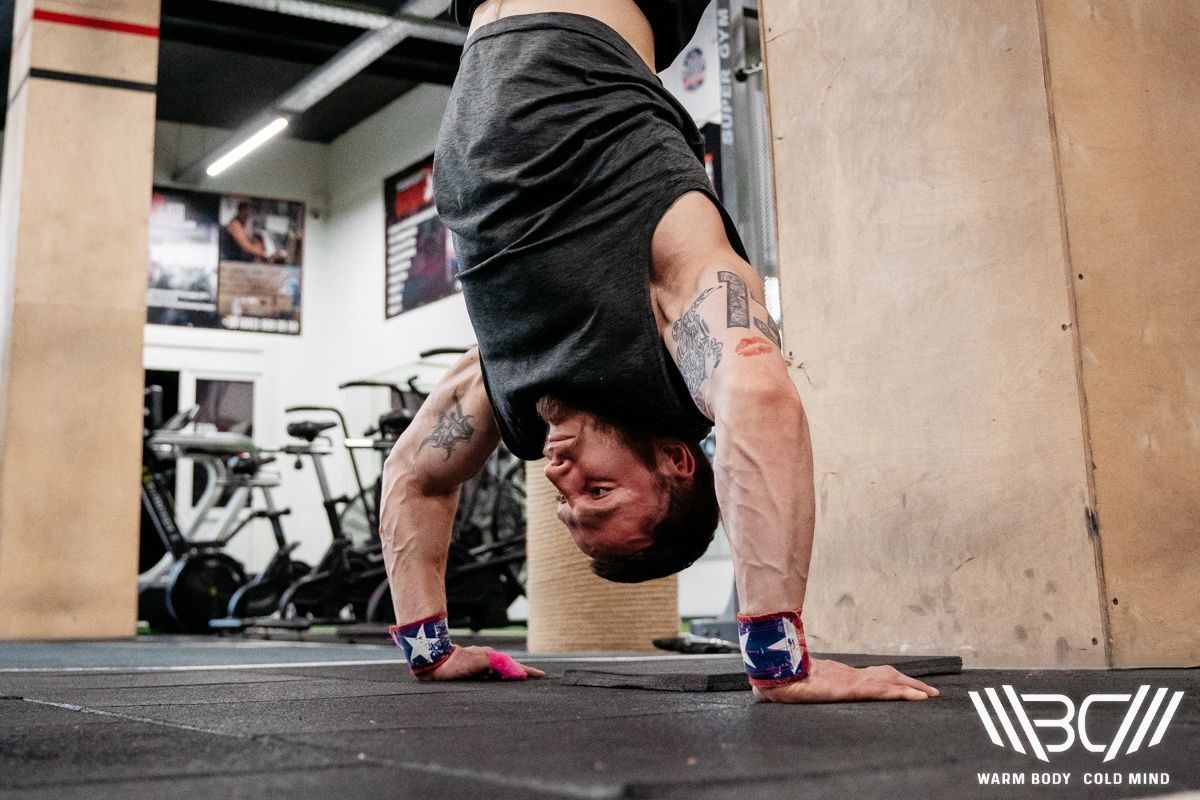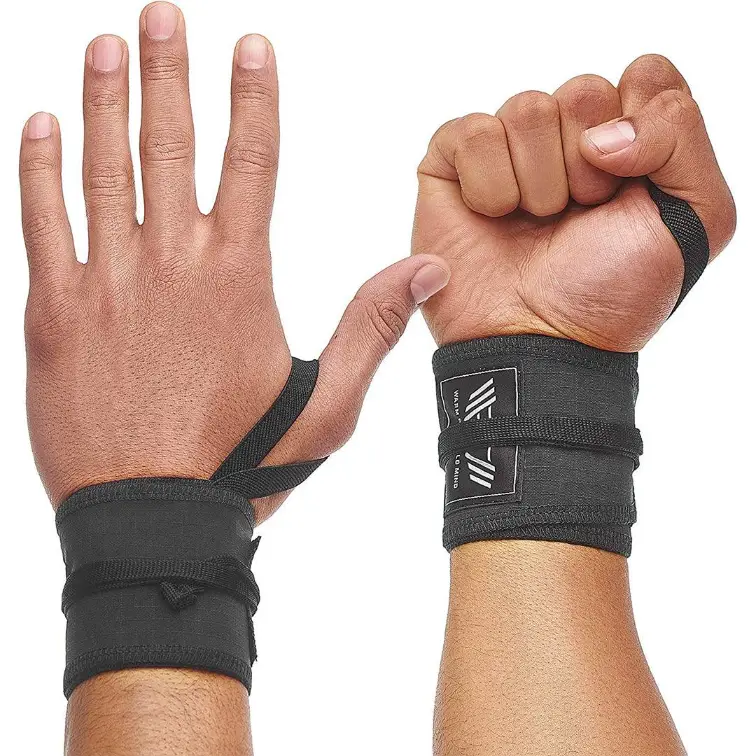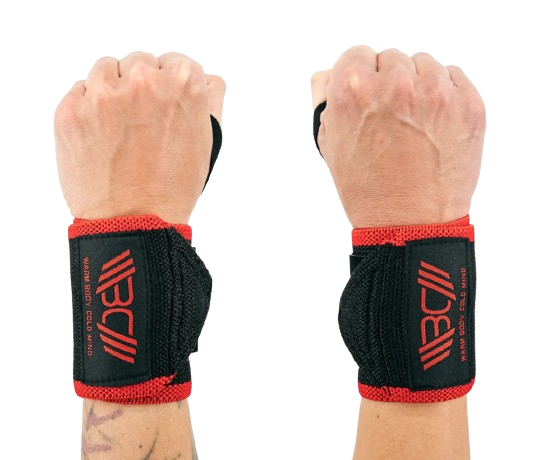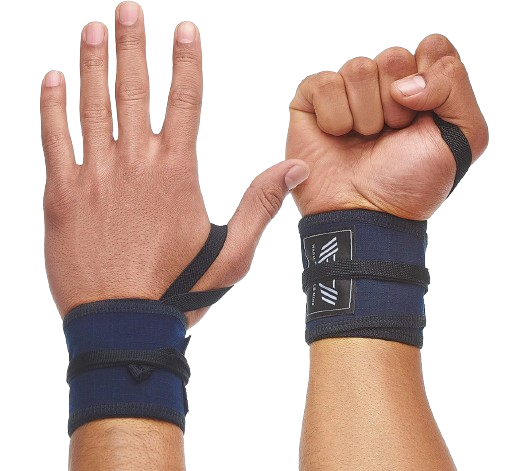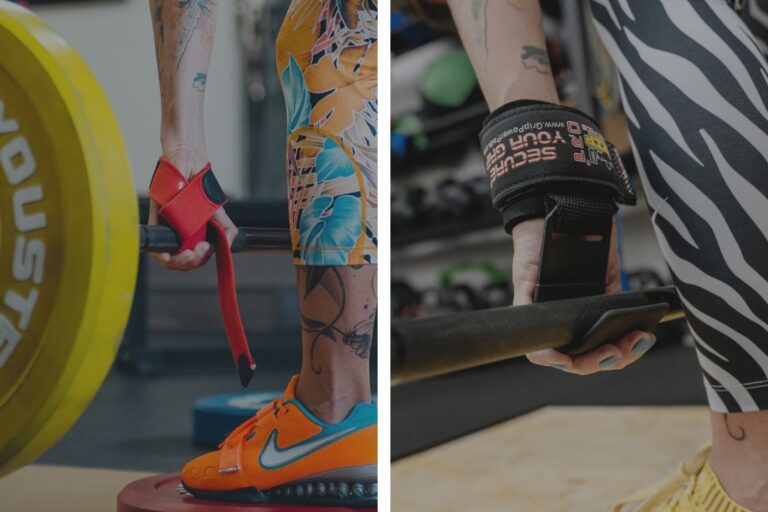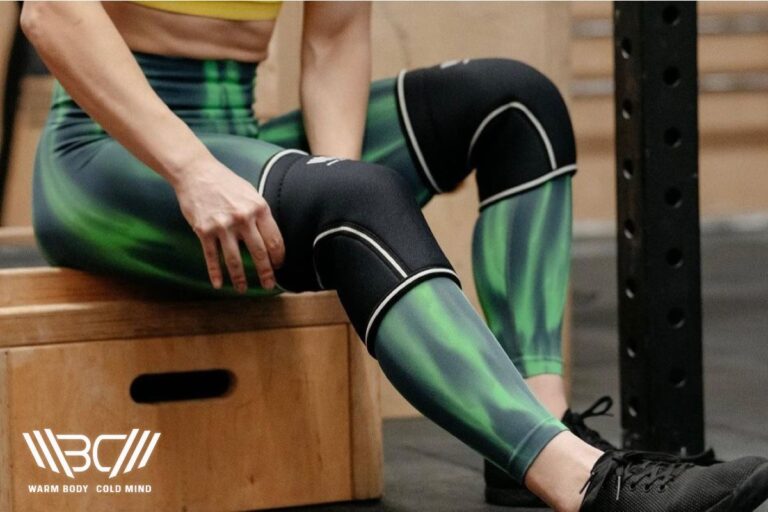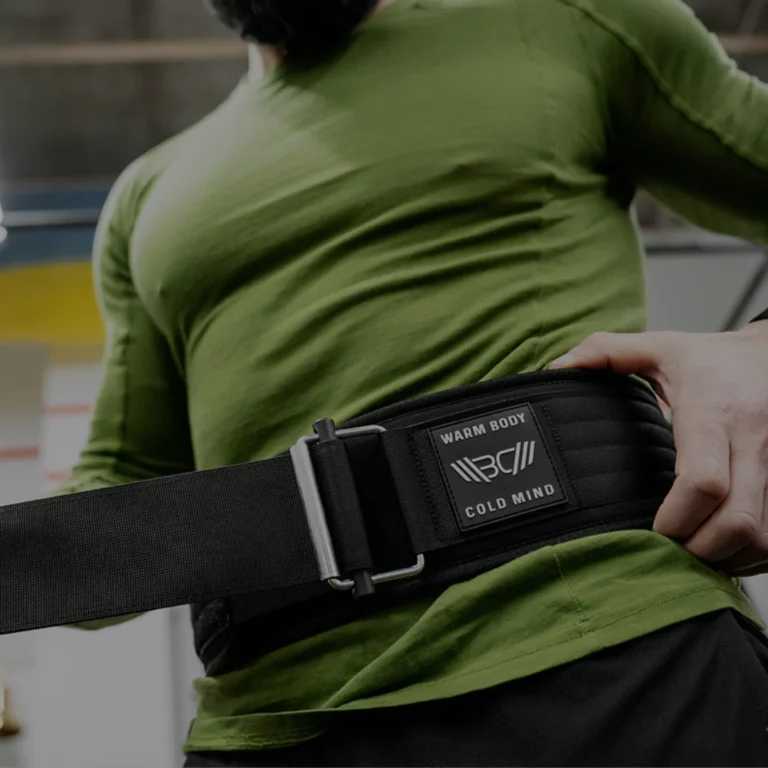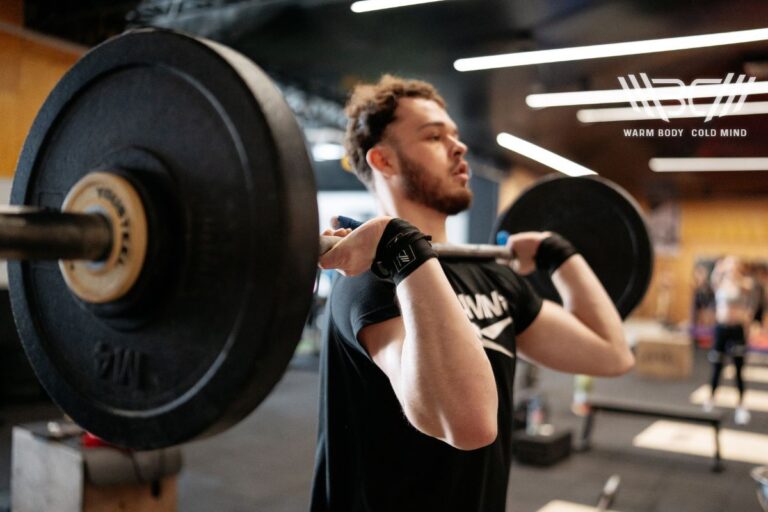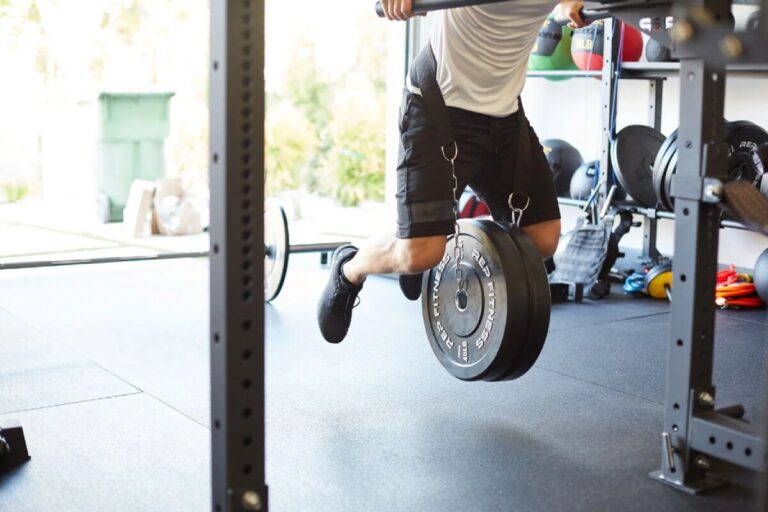How To Get Better At Handstands Starting Today
Handstands can bring fun, form, and function to your daily life and exercise. Gymnastics, dancing, yoga, martial arts, and other athletic and artistic disciplines all incorporate handstands into their routines. In this guide, we’ll talk about how to get better at handstands. We’ll go over essential exercises for handstands, pro tips and tricks to get over hurdles, and the benefits of standing upside down.
How To Get Better At Handstands – Handstand progression is a steady process. Each time you do handstand drills, you improve. Use a wall for balance while you get comfortable being upside down. Once the fear is gone, practice freely. Your strength and balance will improve over time.
The Peculiarity The Handstand As An Exercise
A lot of people think of handstands as just acrobatics, essentially nothing more than a trick. But handstands are not just for gymnasts, circus performers, dancers, and the like. Anybody can gain from learning them. Even just doing drills for handstands can put a spin on your everyday workout, while netting you strength and athletic positives along the way. Let’s talk about the proven benefits of practicing handstands:
Benefits of Handstand Exercise For Health
Handstands can take up to a few months to learn. So, why should you dedicate time to them? Here are some proven health and fitness benefits of practicing handstands:
✅ Upper Body Strengthening
Handstands are popular in disciplines like calisthenics for developing upper body strength. When you do a handstand, you invert the body bodyweight and shift it from your lower to your upper body. Naturally, your body will struggle to adapt to this at first, leading to greater activation of the required muscles, and forcing strength development.
Electromyographic (EMG) measurements done on gymnasts of various experience levels showed activation in major upper body muscle groups, including but not limited to deltoids (shoulders), pectorals (chest), traps (upper back), lats (lower back), triceps, and biceps.

✅ Improving Balance and Coordination
Practicing handstands can develop your balance and coordination, even when simply standing straight. A study looking at the difference in balance between junior and senior gymnasts showed that seniors had better balance both for regular standing and handstands. Furthermore, they eased into both movements with greater control, suggesting improved coordination as well.

Secure your performance with our Velcro wrist wraps – the perfect blend of support and flexibility.
✅ Developing Mind-Muscle Connection
Standing on your hands challenges various physiological and neuromuscular processes. When you first start learning them, the central nervous system (CNS) goes completely crazy to process the amount of new information and delegate action to the necessary body parts.
For example, the organ to our sense of balance is found in the ear — and it’s now upside down. Handstands seriously challenge our proprioception, which is the sense that enables our positional awareness and movement of body parts. Practicing handstands will help you overcome these hurdles, resulting in next-level mind-muscle connection
✅ Increasing Bone Health
Reports have shown that people who participate in gymnastics have higher bone density, bone mineral content, larger bones, and greater bone strength than the everyday person.
Similarly, a study looking at bone health between child gymnasts and untrained children found that bone health was not only greater in trained gymnasts but that the benefits carry over to later stages of life and protect against bones against common aging conditions. And what’s the most essential gymnast exercise? Handstands, as well as various handstand drills.
How To Improve Handstand Results?
Practicing handstands by yourself at home is perfectly fine, but it’s important to know what you’re doing and take the right steps. Here are the basics as well as useful handstand tips and tricks:
1. One Leg At A Time
A common beginner misconception about handstands is that you’re supposed to jump into them with both legs up, using your super-strength to catch yourself mid-air. While that’s certainly one way professionals do it to make it look more attractive and spectacular, it’s a highly advanced technique. To learn how to handstand, you need to learn how to “climb into it” first, so to speak.

Cotton Weightlifting Wrist Wraps
Discover unparalleled wrist support with Warm Body Cold Mind cotton wrist wraps.
The main method of climbing into a handstand is the kick-ups. First, place your knees on the floor at your normal standing width. Next, place your hands on the floor in a handstand position — about shoulder-width apart. Raise your knees off the floor, suspending yourself onto your hand and the balls of your feet.
Depending on your flexibility, you can bring your feet forward if you’d like to reduce the travel distance, but starting from the floor is fine too. Slowly raise one leg off the ground into a handstand position. As you reach your peak of flexibility, you feel your other leg naturally wanting to rise off the floor. At this point, you’ll use that planted leg to generate some force and kick yourself up into being upside down.

Pro Tip:
Do not kick too hard off the ground or you’ll just end up flipping.
2. Use A Wall
One of the first handstand tips in any tutorial is practicing in front of a wall (or another solid object blocking your pathway). Now that you know how to enter a handstand through kick-ups, the next step is finding your balance and getting comfortable being upside down.
In professional acrobatics, dance, and similar classes, you’ll usually see people practicing with a partner instead. As one person attempts to enter a handstand, the other is standing behind them ready to catch them mid-air (act as a wall, per se). If you have a training partner, you can do this too, but for most people training alone at home, an empty wall is the next best thing.
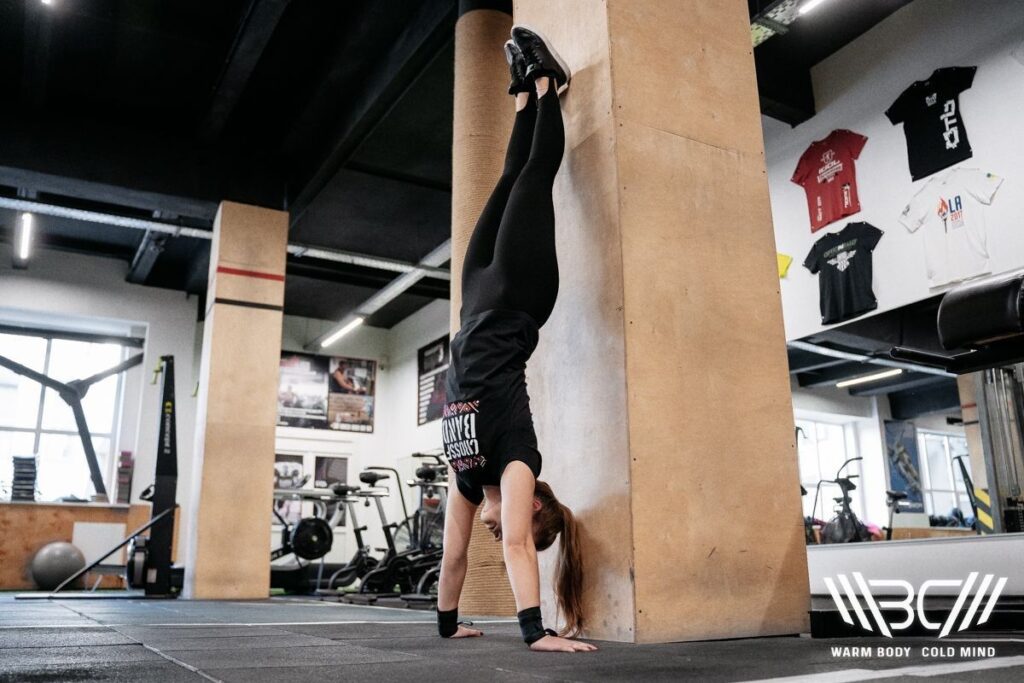
Place your hands in front of the wall ready to enter a handstand position. Perform a kick-up, tighten your core, and attempt to hold a handstand. The wall will catch you and prevent a fall. Practice staying in this position to familiarize your brain with being upside down, as you get better at pinpointing your center of balance.
Wall drills are great because they can easily be adjusted to your current handstand level. In the beginning, you’ll want to stay as close to the wall as possible, both for support and for fear of falling over. As you get more comfortable with being on your hands, you will move further from the wall, only occasionally needing it to stop you from falling over. Eventually, you’ll come to realize you no longer need it.
3. Learn How To Fall First
This tip may seem inverse to what you want to do, but it will make your handstand progression journey so much safer and make you more confident in what you’re doing. Before you can learn how to hold a handstand longer, you need to overcome the fear of falling.
The way you get rid of this fear is knowing that if something goes wrong you know how to get out of it. Falling is an essential part of learning handstands — no matter what, it will happen. So, how do you fall gracefully without hurting yourself?
The first and most essential way to get out of a handstand is to reverse the way you came in. Remember kick-ups? What would be the most logical way to land from those? The same motion, but backward. The first leg that went up will also be the first to land down. This drill is commonly called “leg switches”. Leg switches are the most comfortable and safe way to learn falling out of a handstand.
But what if I start falling over? The reality is, that you’ll be in the position to fall over only if you push up with too much force that it essentially flips your backside. If you control the ascend, you will be able to control the descent as well. However, there are also two techniques for getting out of falling over, too.
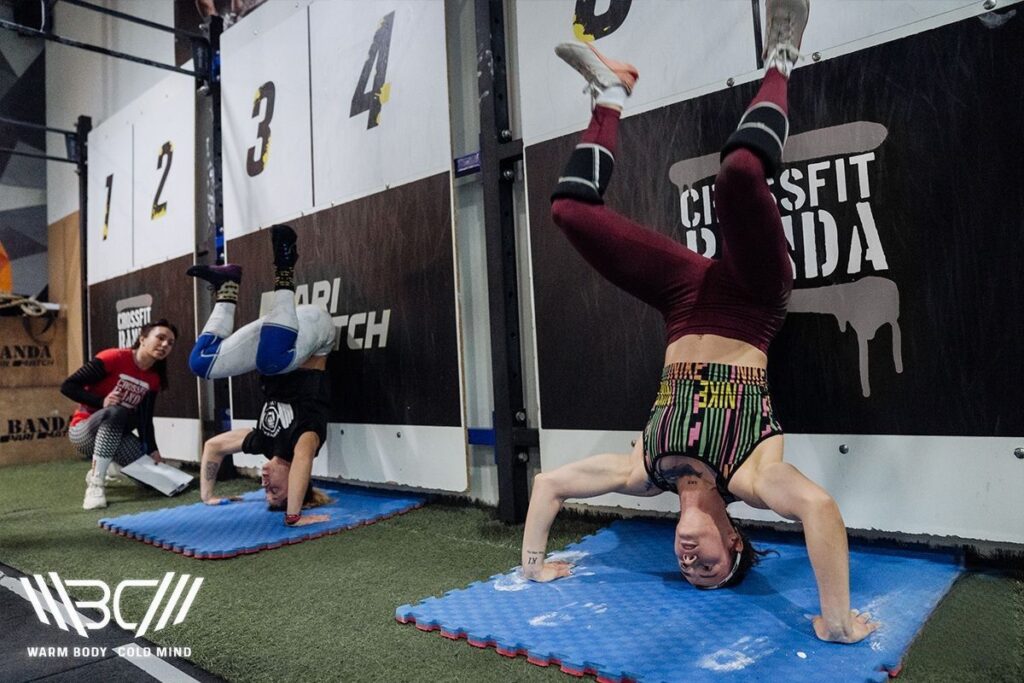
The first is entering a one-armed cartwheel. Sounds complicated, but it isn’t as scary as you might think. Lift one arm off and tuck in your knees towards your chest. You’ll end up doing a half-twist move and land sideways safely on your feet.
The second technique is a last resort, but it can save your ass quite literally. So, you’re falling over and there’s no way to avoid it? Quickly bend one leg at the knee into a 90-degree angle and try to flex it behind your back.
As you fall, the foot of that leg will land first, cushioning most of the damage that would otherwise hit your hips and back. People with enough core strength can literally land on the heel and roll into the upper back so that their midsection never even touches the ground.

Pro Tip:
Falling overhead? Try tucking your knees towards your chest, it should swing you back the other way and also lower your center of gravity closer to the ground, allowing you to control your fall back the way you came.
4. Secure Your Wrist
When you do a handstand, your wrists and ankles essentially swap places, so to speak. This means that the brunt of your body weight is now supported by your wrists, naturally putting an amount of pressure most people aren’t ready for. A lot of people give up on practicing handstands because the wrist pressure is high, some pain kicks in, and they’re afraid of getting hurt.
Protecting your wrists is also an important part of learning handstands. One of the ways you can do this is by adding wrist support. Our recommendation would be to incorporate wrist wraps. Wrist wraps essentially encircle the joint, stabilizing it and reinforcing the structure. We recommend one of two types of wrist wraps.
WBCM Elastic Velcro Wrist Wraps
First, the Warm Body Cold Mind Elastic Velcro Wrist Wraps. They’re made from strong cotton mixed with canvas webbing, reinforced with extra stitching. Wrapping them is easy — place your thumb through the loop, roll them around your wrist, and secure them using the unbreakable velcro.
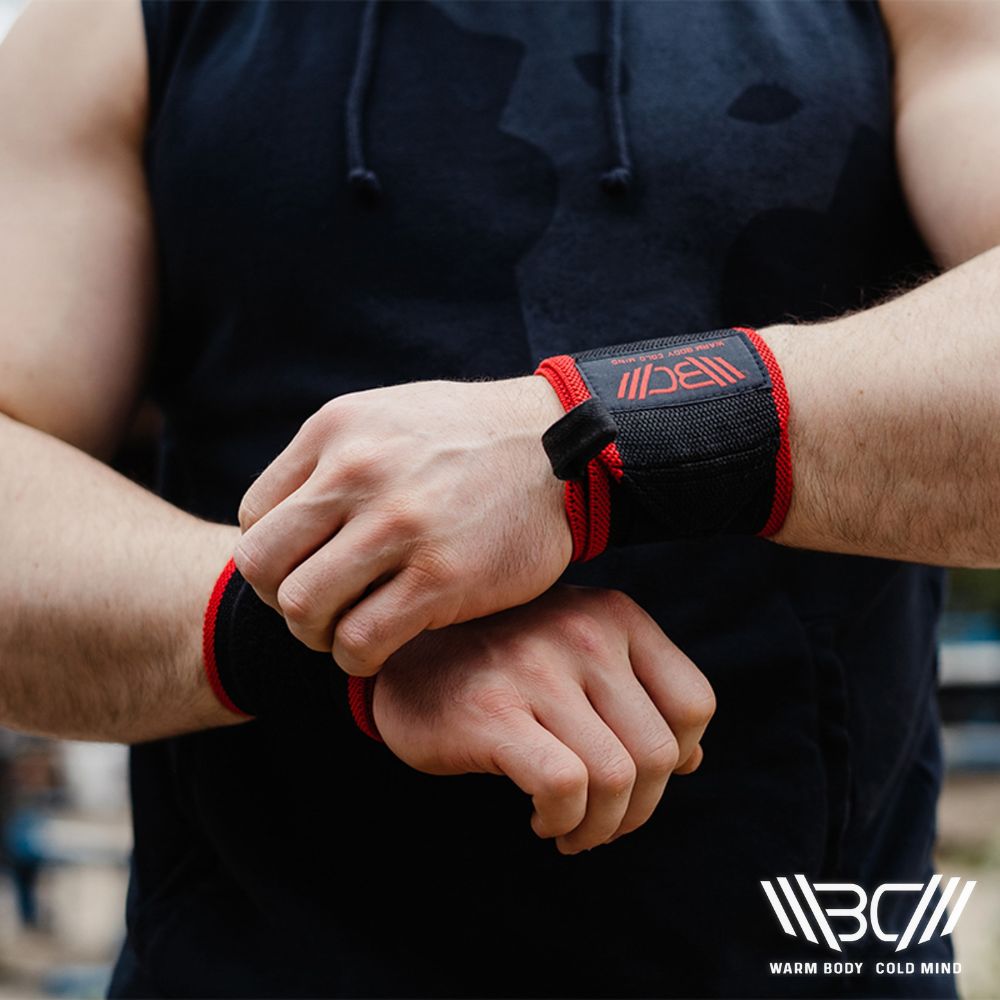
They come in two sizes, 12 & 18, representative of their overall length in inches, fitting athletes of all shapes and sizes. The width is a universal 3 inches on both. Each purchase includes a pair, in case that is a concern.
WBCM Cotton Wrist Wraps
Our second option is the Warm Body Cold Mind Cotton Wrist Wraps. They’re made from 100% pure cotton, reinforced around the edges with extra stitching. They come in one size, 30 inches long and 3 inches thick.
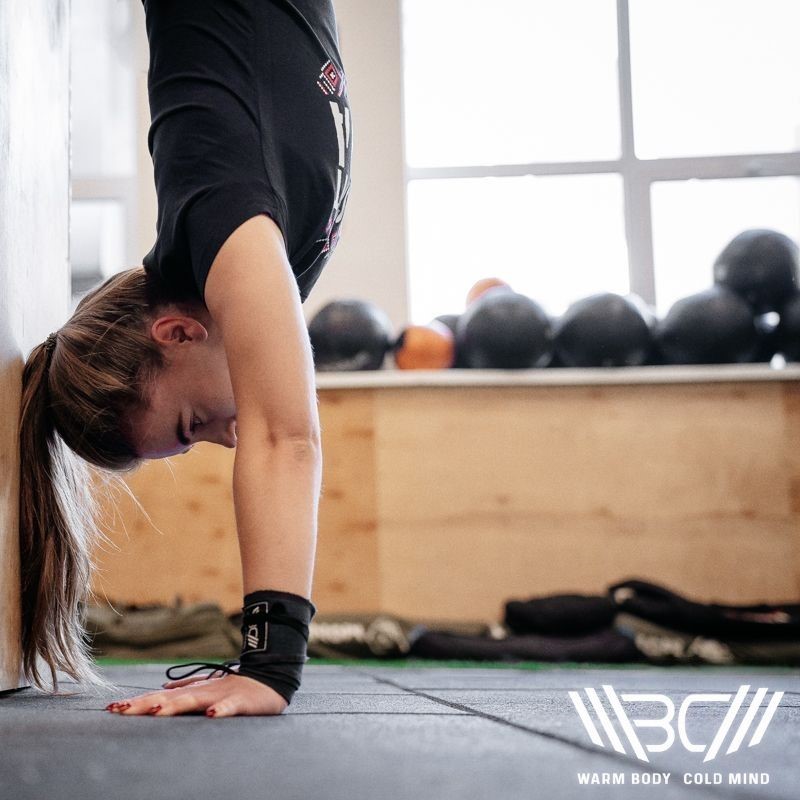
Wrap them around your arms, tuck the loose end under the string, then twist around your wrist to adjust tightness. These also come in pairs, with six different color options letting you customize your look.
5. Workouts For Handstands
Lastly, let’s mention some exercises and drills — workouts for handstands if you will. Add these to any well-rounded training routine and you’ll be doing handstands in no time.
Wall Climbs – approach the wall backward in a pushup position. Place your feet on the wall and slowly start walking up, moving your arms closer to the wall as your legs get higher. Eventually, you’ll end up in a handstand position supported by the wall. These drills are great for everything from wrist and shoulder strength to practicing being upside down
Planks – Planks are an essential exercise for strengthing your core, and a strong core is essential for handstands. The main driving factor behind planks is the body’s struggle to maintain shape and activation of stabilizing muscles. The same principle is later applied to handstands when you tighten your core to hold them.
Frog Stand – The Frog Stand is a pose that is often used in calisthenics when teaching handstands. Place your hands firmly on the floor and lean into your elbows with your knee. Suspend your legs in the air using your elbows as a platform for laying your knees. This exercise strengthens identical muscles used in handstands, on top of being an essential balance drill.
Wrist Stretches – All that handstand training will naturally build up tension in your wrists. Incorporate some light stretches into your pre and post-exercise routine to relieve some of the stress and stimulate blood flow. Simple wrist flexion and extension is a good place to start, along with rotations and light wall pushing.
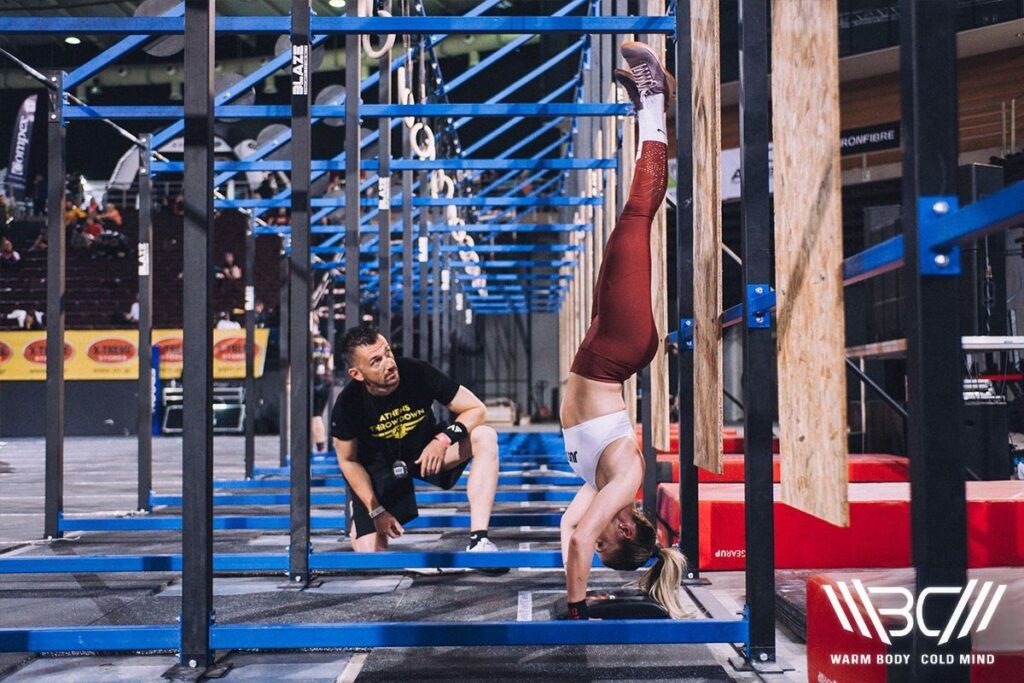
Naturally, you should be doing regular exercise in the meantime, if you’re not already. If you want to use this time to boost your handstand strength, do exercises for the posterior chain (lower back, glutes, hamstrings), arms (shoulders, triceps, forearms), and core stabilizers like abdominals and obliques.
Compound exercises like the deadlift or overhead press are both great for your core, as well as your posterior chain or upper body respectively. Core exercises can include the pivotal planks, as well as leg raises or deadbugs. Pushups are a great choice for upper body strength, as they not only train your arms, shoulders, back, and chest but also condition your wrists to support your body weight.
Subscribe!
The latest reviews of must-have home gym training equipment, apparel, and supplements that will enhance your performance and bring you new results.
Training Plan To Get Better At Handstands
Now let’s talk about practice intervals. Handstands are not something you can brute force your way into learning. Your body needs to acclimatize to the different phases of learning.
Handstands are one of those things that should be trained with quality, not quantity. The exercise is equally mentally exhausting as it is physical. 15-20 minutes of focused session is good enough. If you feel uncomfortable, dizzy, sick, etc., feel free to stop.
In our experience, if you really put your mind to it, by the end of day 21 you’ll already see significant handstand progression. At some point, all elements will come together and the exercise will just “click”. With that in mind, here’s a simple 3-week training schedule to demonstrate.
| Week | Monday | Tuesday | Wednesday | Thursday | Friday | Saturday | Sunday |
| First | Handstand Practice | Regular Training | Rest | Handstand Practice | Regular Training | Rest | Handstand Practice |
| Second | Regular Training | Rest | Handstand Practice | Regular Training | Rest | Handstand Practice | Regular Training |
| Third | Rest | Handstand Practice | Regular Training | Rest | Handstand Practice | Regular Training | Complete (or repeat depending on progress) |
Note that the speed at which you learn handstands will also be determined by your current athletic level, as well as prior experience with handstands or a related activity. For example, it’s safe to assume that someone like a ballet dancer has a better understanding of balance and stronger core stability than a recreational gym goer.
It’s perfectly fine if, by the end of the third week, you’re still not able to do a full solo handstand. You’ll see progression you can be proud of already, so just repeat the cycle.

FAQ
What Muscles Help With Handstands?
Muscles that work the most in handstands include the posterior chain (lower back, glutes, hamstrings), arms (shoulders, triceps, forearms), and core stabilizers like abdominals and obliques. The greater the strength of working muscles, the greater the quality of your handstand.
How Do You Build Strength For Handstands?
Focus on developing the above-mentioned muscle groups. Good exercises for handstands include compound lifts (with lower weight to focus on exercise functionality), core exercises like planks, and exercises that target the upper back, triceps, and shoulders. Doing handstand drills is also an efficient and targeted way to build strength for handstands.
How Long Does It Take To Get Good At Handstands?
If you’re a first-timer, know that handstand progression is gradual. If you’re in relatively good physical shape, you’ll see progress every day. Most people need a couple of weeks of regular practice to do a full handstand. The more you practice, the better you’ll understand how to hold a handstand longer.
Why Is It So Hard To Balance Handstands?
Simply, handstands are the inverse of our nature. They not only require a great physical effort but also brain rewiring. Babies are not born with the ability to stand, it takes time to develop the mind-muscle connection. You go through essentially the same process with learning handstands, slowly developing muscle memory and confidence.
Conclusion
Now you know how to get better at handstands. But more importantly, you understand how learning handstands can benefit your daily and athletic life as well. Handstands offer everything from strength building in the upper body, improved mind-muscle connection and balance, cardiovascular benefits, as well as being a cool party trick. They require some time to learn, but the practice is fun and the payoff is worth it.
Now it’s your turn. Tell us what motivated you to try handstands. If you found these tips helpful, we’d also love to see your handstand progression. Use the comment section or reach out to us on social media. Until next time.
References:
- Andrzej Kochanowicz, Bartłomiej Niespodziński, Jan Mieszkowski, Michel Marina, Kazimierz Kochanowicz, Mariusz Zasada, “Changes in the Muscle Activity of Gymnasts During a Handstand on Various Apparatus,” The Journal of Strength & Conditioning Research vol. 33, no. 6 (2019), 1609-1618
- C. L. Zanker, L. Gannon, C. B. Cooke, K. L. Gee, B. Oldroyd, J. G. Truscott, “Differences in bone density, body composition, physical activity, and diet between child gymnasts and untrained children 7-8 years of age,” Journal of Bone and Mineral Research vol. 18, no. 6 (2003), 1043-1050
- Ewan Thomas, Carlo Rossi, Luca Petrigna, Giuseppe Messina, Marianna Bellafiore, Fatma Neşe Şahin, Patrizia Proia, Antonio Palma, Antonino Bianco, “Evaluation of Posturographic and Neuromuscular Parameters during Upright Stance and Hand Standing: A Pilot Study,” Journal of Functional Morphology and Kinesiology vol. 8, no 2 (2023), 40
- J.L. Taylor, “Proprioception,” Encyclopedia of Neuroscience (Cambridge, MA, Academic Press 2009), 1143-1149
- Jarosław Omorczyk, Przemysław Bujas, Ewa Puszczałowska-Lizis, Leon Biskup, “Balance in handstand and postural stability in standing position in athletes practicing gymnastics,” Acta of Bioengineering and Biomechanics vol. 20, no. 2 (2018), 139-147
- Lauren A. Burt, David Greene, Geraldine A. Naughton, “Bone Health of Young Male Gymnasts: A Systematic Review,” Pediatric Exercise Science vol. 29, no. 4 (2017), 456-464
- Miriam Kalichová, Petr Hedbávný, Gustav Bago, “Influence of Strength Abilities on Quality of the Handstand,” International Journal of Sport and Health Sciences vol. 7, no. 10 (2013), 602-608
- Petr Hedbávný, J. Sklenaříková, D. Hupka, Miriam Kalichová, “Balancing in handstand on the floor” Science of Gymnastics Journal vol. 5, no. 3 (2013), 69-79
Author: Sergii Putsov
PhD in Sport Science, Olympic weightlifting, Strength & Conditioning coach and fitness expert
Sergii Putsov is a professional weightlifter with over 20 years of experience and multiple national medals. He was a member of the National weightlifting team, competing in the 94 kg weight class. Sergii holds a master’s degree in Olympic & Professional Sport Training and a Ph.D. in Sport Science. After his athletic career, Sergii transitioned into coaching and is now responsible for designing training programs, writing blog articles, providing live commentary for international weightlifting competitions, and hosting sport and fitness seminars worldwide.

